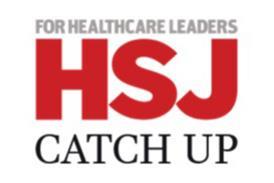STPs and ICSs are beginning to show evidence of the benefits of self-organising as they take on greater oversight of NHS funding and performance and planning, writes Chris Ham
Integrated Care Systems, and their progenitors, Sustainability and Transformation Partnerships are, almost by definition, coalitions of the willing.
They have no statutory basis. They are being asked to agree plans for improving the health and care for their populations. Increasingly they are also being expected to exercise collective control over funding and performance. In other words, without any legal authority, they have to persuade their very disparate memberships to use collectively, and to best effect, the resources that, in law, the individual organisations hold. But can that be done?
Outside the NHS, in a landmark article published in 1968, ecologist and author, Garrett Hardin, described the damage that occurs when common resources are overused. Hardin’s article, The Tragedy of the Commons, was based on his study of the overgrazing of common pasture land in the 19th century. He argued that when no one controls the use of common resources, and each person has an incentive to use them before others do, the result is likely to be the destruction of these resources.
Preventing overuse
Subsequently, Nobel prize winning economist, Elinor Ostrom, challenged the inevitability of the commons being destroyed by studying societies where this outcome had been avoided. Drawing on examples from irrigation, fisheries and forests, Ostrom argued that communities can exercise collective control to prevent overuse. Her examples relied on self-organising by those using common resources, often in communities where users lived and worked in close proximity.
Ostrom’s work is relevant to STPs and ICSs, even though the context is very different.
She recognised that self-organising does not work in all circumstances and set out a number of design principles to guide how it might succeed. These principles included users having the right to self-organise, sharing in the development of rules on resource use, putting in place graduated sanctions for violations of these rules, and agreeing on a low cost means of resolving conflicts.
Ostrom’s work emphasises that self-organising requires frequent personal contact and face to face communication in order to generate understanding of and shared commitment to collective action
Ostrom’s ideas reflected her belief that “a core goal of public policy should be to facilitate the development of institutions that bring out the best in humans”. This meant appealing to people’s intrinsic motivation to work together for their greater good. Self-organising based on trust and reciprocity offered in her view the best hope of doing so.
STPs and ICSs are beginning to show evidence of the benefits of self-organising as they take on greater oversight of NHS funding and performance and planning. They also demonstrate the challenges of making a reality of partnership working in a context in which organisations continue to have responsibilities under the law.
Equally important is the role of the regulators who may support self-organising or make it more difficult depending on how they interact with commissioners and providers. Senior NHS leaders may also struggle with the inherent ambiguity of STPs and ICSs when they have worked in an environment of central direction and national prescription.
Ostrom’s work emphasises that self-organising requires frequent personal contact and face to face communication in order to generate understanding of and shared commitment to collective action. Repeated interactions demonstrate the credibility of shared commitment and the trustworthiness of users of common resources. They also make it possible for participants who violate agreed rules to be called out and subjected to peer pressure to conform.
My experience as chair of the Coventry and Warwickshire Health and Care Partnership underlines the importance of Ostrom’s insights. STP and ICS chairs have a key role in working with leaders in their systems to make a realty of self-organising and they do so through influence and persuasion and the use of “soft power”. Much of my time is spent meeting with leaders one to one and in groups, building understanding of each other’s views and priorities as a basis for collective action.
Chairs also have a role in developing appropriate governance arrangements. These arrangements include local authorities and the voluntary sector who are emerging as increasingly important partners in many areas. Governance needs to go hand in hand with new ways of contracting for and funding NHS services, such as aligned incentive contracts, to reinforce the behaviours needed to make a reality of partnership working.
The prize on offer is for STPs and ICSs to act as stewards of NHS resources in their areas, earning the right to make decisions with less involvement from regulators as they mature. Some will argue that this is wishful thinking without changes to the law, and a stronger steer from regulators or greater central direction. The counter view is that changing the law and central direction are blunt instruments that have often failed to deliver improvements in care in the past.
Ostrom’s injunction that we should build institutions that bring out the best in people is surely worth heeding. Her design principles provide guidance for those willing to embark on this journey. For those of us in leadership roles, the pace of change may often feel slow but systems that are further ahead show that patience can be rewarded. Self-organising may offer the best hope of achieving sustainable improvement in a complex system.





























2 Readers' comments